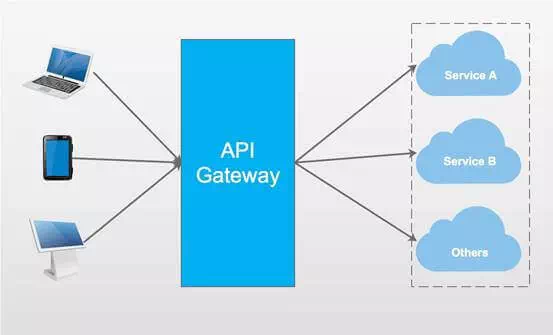Infrastructure Foundations in Digital Performance
Every digital platform begins with a foundational structure. That structure must support not only current functionality but future demand. Platform stability is rooted in this principle. Without it websites and applications are prone to latency downtime and ultimately a breakdown in user trust.
The key is scalability. It is the difference between systems that collapse under pressure and those that absorb demand. WebDev200 builds each platform with this foresight. The infrastructure is shaped to accommodate surges, scale with traffic and evolve with the business.
Digital platforms no longer operate on fixed load expectations. Campaign launches, social spikes, product drops or global expansions can all trigger activity well beyond standard usage. Platforms must be ready. The architecture needs to stretch without snapping.
A stable platform is not just about server uptime. It is about load balancing data distribution failover handling and code structure optimized for growth. Every decision made during development contributes to long-term resilience.
Resource Distribution in Layered Systems

Scalability begins at the architectural level but is enforced through layered resource management. Modern systems distribute computation storage and routing across environments rather than relying on single-point structures. This distribution reduces failure risk and improves performance consistency.
Load balancing is central to this approach. By routing incoming requests across multiple servers the system avoids overloading any one machine. Response times remain consistent and spikes are absorbed naturally. Whether traffic grows 5 percent or 500 percent the system stays operational.
WebDev200 integrates dynamic resource allocation across its deployments. This includes scalable database clusters, elastic cloud services and edge computing layers that bring content closer to the user. These elements ensure the system grows in all directions, not just vertically.
Caching layers enhance this effect. Popular or repeated queries are delivered faster, reducing stress on primary databases. API gateways throttle unnecessary calls while backend services scale independently based on volume.
A layered system is not just more powerful. It is more intelligent. It reacts to load in real time and distributes activity with precision. This is the architecture behind true platform stability.
Service Decoupling for Load Flexibility
One of the most important shifts in scalable architecture is the move toward microservices. Traditional monolithic platforms bind features together in a single unit. If one part fails the entire system is compromised. In contrast microservices separate functionality into independent components.
This decoupling means that traffic to one feature does not affect the performance of another. A spike in cart activity during a holiday sale does not slow the homepage or support chat. Each service has its own deployment rules, its own scaling triggers and its own failover path.
WebDev200 structures client platforms with this modular flexibility. Services like authentication product search or content delivery are isolated from one another. They communicate through APIs but do not rely on shared memory or centralized execution.
The result is performance isolation. Each part of the platform remains stable even under load. Updates happen without downtime. Features scale independently. Systems stay live even during partial strain.
Modular architecture also improves development speed and testing. Teams can deploy changes to one service without affecting others. The platform becomes more agile and less fragile.
Redundancy in Application Reliability

No platform is immune to failure. But resilient platforms plan for it. Redundancy is the practice of duplicating critical systems to avoid disruption. In scalable architecture it means there is always a backup. Always a path forward. Always a fallback.
Redundant systems include mirrored servers, load-paired data centers and failover routing policies. When a node fails the system reroutes traffic. When a database slows a replica picks up the query. Users remain unaware. Service remains consistent.
WebDev200 deploys redundancy at multiple layers. Application code is hosted in multi-zone environments. Storage is mirrored across geographies. Backups are automated. Downtime is no longer an emergency. It is a scenario that has been anticipated and neutralized.
This redundancy extends to third-party services as well. Platforms that rely on external APIs or SaaS tools integrate fallback logic in case of provider failure. Payments redirect. Logins pause gracefully. Systems log disruptions but never collapse.
This proactive reliability is what transforms good platforms into trusted platforms. Users return because the system works. Teams operate without fear of collapse. Redundancy is not excess. It is insurance.
Performance Optimization Across Environments
Scalable architecture must also consider speed. A platform that stays online but performs poorly still fails the user. Performance optimization ensures that scalability does not come at the cost of experience. It fine-tunes system behavior under real-world conditions.
Page load times, database query speed, media rendering and asset delivery are all part of this equation. Optimization starts in code. Clean functions, efficient queries, compressed assets and asynchronous calls all reduce execution delay.
WebDev200 runs performance audits across devices, regions and browsers. This data informs decisions around content delivery networks compression formats and prioritization logic. The result is a platform that feels fast, not just survives traffic.
Mobile optimization is a core focus. With mobile usage now dominant platform architecture must accommodate variable connection speeds and device limitations. Adaptive image sizes, offline support and client-side caching are all embedded strategies.
Scalability without speed is waste. That is why performance tuning is part of every WebDev200 engagement. It is not added later. It is built from day one.
Security Architecture in Scalable Platforms

As platforms grow their attack surface expands. Scalability increases complexity. Without strong security architecture that complexity becomes vulnerability. Stability requires protection. The system must not only perform but defend itself.
WebDev200 integrates security into the architecture at all layers. This includes tokenized authentication, encrypted data channels, firewalls role-based access and real-time monitoring. Every request is inspected. Every endpoint is guarded.
Scalable platforms often rely on API-first designs. This requires strict gateway logic throttling CORS policies and access control. It is not enough for a feature to function. It must do so only for authorized users under secure protocols.
Database security is also essential. Read-write access is isolated. Backups are encrypted. Logs are maintained in secure containers. Scaling does not mean lowering standards. Every server that joins the system must meet the same security benchmarks as the original node.
Stability means knowing that growth will not compromise integrity. Security is not a layer. It is a foundation.
Final Thought on Long Term Web Health
Scalable architecture is not just a technical preference. It is a commitment to growth resilience and quality. It means building with tomorrow in mind and preparing platforms for a level of success that outpaces expectations.
For WebDev200 scalable architecture is not a trend. It is a standard. Every client platform is designed to handle real traffic, real pressure and real growth. That is how platform stability is achieved not through luck but through structure.
Scalability ensures that your business can expand without your platform holding you back. It keeps your team focused on innovation instead of outages. It gives your users confidence and consistency every time they log in.
If your digital infrastructure is not built to scale your strategy is limited. Let WebDev200 show you how to create platforms that grow with your vision and never fail your audience.
Contact us today to learn how scalable architecture can transform your web presence into a performance engine built for the future.

